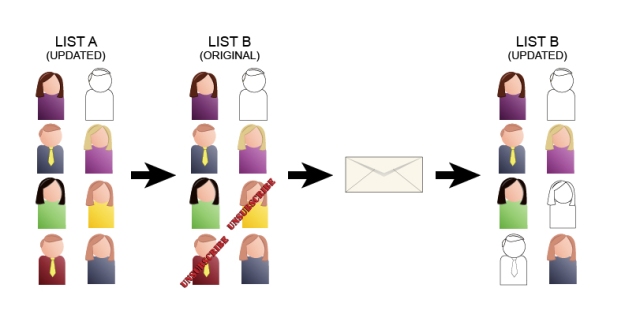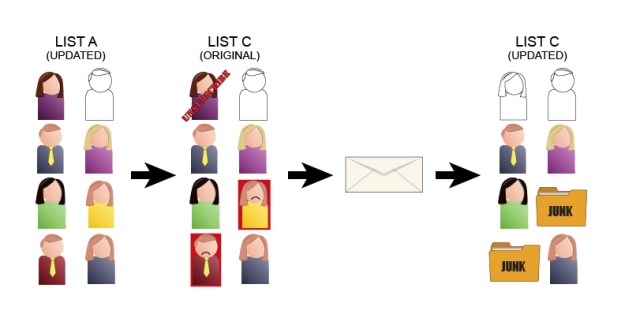
In the retail marketing field, one popular use of email marketing automation is to create shopping cart abandonment programs, and it’s no wonder: Shopping cart abandonment rates are higher than ever, with various sectors reporting an average rate of 75% abandonment. Some sources estimate the amount in lost sales in the billions, although these figures are extrapolated from a scenario where all of these shopping cart sales are completed. In truth, a lot of shopping cart abandonments never amount to anything; they are comprised of people who are just looking, or realize they can’t afford the purchase. But even if only 5% of these abandoned carts are ever fulfilled, 5% of a billion is still 50 million, and that’s nothing to sneeze at. In this, the fourth installment in our Email Automation series, we’ll look at the things you’ll need to consider when setting up an abandonment program.
Shopping Cart Solutions
Before we get too deep into the details of creating a shopping cart abandonment workflow, let’s look at how shopping carts are created and how they work. For most businesses, the shopping carts exist separately from their main websites. They are purchased from third-party vendors rather than made from scratch. For anyone looking to buy a shopping cart solution, there are almost as many of these as there are email marketing solutions, and, as with email marketing solutions, shopping cart programs range in price from free to hundreds of dollars. Not surprisingly, the ones listed as free, are usually anything but, and require additional (expensive) modules to handle things such as shopping cart abandonments. Even some of the more expensive solutions sometimes require additional fees for inclusion of an abandonment extension or module. Some shopping cart software doesn’t include any type of abandonment solution, expecting you to implement it through your ESP either via webhooks or an API.
The Right Tool for the Job
A few shopping cart systems do offer email abandonment programs, but there are some important downsides to this approach. The biggest downside is that it separates the shopping cart actions from the data in your ESP where things such as clickthroughs and opens will have more use for determining shopping behavior. Some ESPs let you import that data in the form of external data tables, and this can help, especially if you plan to combine your shopping cart solution with another program, such as a recommendation engine (a little more on this later).
It is also important to remember that shopping cart software is not designed with email in mind. Its primary function is to process purchases, so features such as personalization, content blocks, and segmentation are either non-existent, or available only in their simplest forms. You might be able to merge a person’s first name and cart details into a mailing, but you won’t have the options of changing subject lines and individual content blocks based on the recipient’s shopping behavior. This can turn into a major downside if you want to tweak the individual abandonment reminders for each customer based on factors such as past purchases or other actions.
Lastly, email marketing software has a distinct edge in deliverability. Deliverability is the bread and butter for any ESP, so most do everything in their power to ensure that the email deliver rates for their clients run into as few problems as possible. For a shopping cart provider, the ramifications of email deliverability are less of a concern, and you may find yourself having to hire a deliverability expert to keep things on track.
Communication Techniques
There are really only two basic pieces of information that the ESP needs to run an abandoned cart campaign. The first is a notification that someone has started a checkout procedure with a shopping cart, but has left the purchase unfinished for a specified amount of time. The second is the indicator that the cart is now empty. This information can come in a number of forms, such as webhooks and API calls, but they all do essentially the same thing. Sometimes these functions are wrapped up in a neat little package and presented as an extension or an app, but these handle the same call-out information as the processes described above, just wrapped in a slightly more user-friendly format.
As far as Goolara Symphonie is concerned (and, presumably, other ESPs that offer automation), the format matters very little. Once Symphonie checks on whether a cart has remained unfulfilled, and learns when it has been emptied, it should be possible to go ahead with a shopping cart abandonment email campaign. The basic structure looks something like this:
- Did the customer put an item or items in the cart and then leave?
- If so, send them a reminder.
Some cart abandonments stop at this point, while others continue with three or more reminders. Some will increase the incentive by offering an additional discount, depending on the nature of their business.
Don’t Miss the Bus
You should act quickly on cart abandonments. The longer you wait, the less likely it is that a customer will return to the shopping cart. If you are planning an abandonment program, you’ll need to work more closely with your IT department than you would with other types of automations. Cart abandonment programs need to kick in as soon as it becomes apparent that the person is not proceeding with the purchase of the items in their cart. If you already have systems in place to notify you to the actions of visitors to your site, the process becomes somewhat simpler.
Different Strokes
In research for this article, we tried abandoning carts on various sites, to see what happened. A remarkable number of them sent no notices. Of the ones that did send notices, the strategies were quite varied and, in some cases, were contingent open the type of products they sold. Here are a few examples:
Company A
Company A specializes in high-end, expensive items that appeal to the fashion conscious. They had the most thorough abandonment campaign. It started with a notice that items were placed in the shopping cart as soon as it happened, followed by a reminder the next day. Two days later, another reminder was sent offering $5 off the chosen product. Two days after that, another reminder was sent with the subject line “Last chance for $5 off on that item you liked.” No further notices after that.
Company B
Company B specializes in clever devices for fans of science fiction films and television shows. They took a very different approach. They only sent one notice, which also added a $10 discount to the purchase. After that, they sent one more email that contained suggestions for similar products. This is a very clever approach, but it also means either utilizing a sophisticated recommendation engine as part of the process, or including a field that indicates each recipient’s preferred product line or department. For this type of sophisticated approach, the ability to accept external data tables is a must.
Company C
Company C had the weakest campaign, sending only one reminder two days later, which contained no discount offers. For them, this makes a certain amount of sense. This site specializes in heavily discounted products that are only available in limited quantities, so there is already a built in discount for each product, and the limited quantities discourage one from dawdling too long before purchasing a product.
As you can see, cart abandonment does not have a “one size fits all” solution. The type of commerce your company engages in will determine the best approach. If you are already offering substantial discounts, it might be counter-productive to offer more. If your products fall into specific categories, you might also want to offer alternatives when that is practical, although keep in mind that setting this up, will probably mean more work on your end.
Targeting the Messages
As with any email, the more personal the message, the more likely the recipient is to respond to it. One nice thing about shopping carts is that most sites require a sign-in before a customer can add anything to a cart. You should have a customer’s first name and email at the very least. If your site collects other information about a customer’s shopping habits, so much the better. Additional data can help you decide which messages to send. Here are a two very different examples of ways using an ESP can improve the shopping cart results.
The Serial Abandoner
Everyone has decided at some point to skip purchasing something that they put in their shopping cart, but there are some people who make a habit of it. There are also those who have become aware that you offer discounts when carts are abandoned, and start abandoning carts on purpose to get price reductions. The first group is an annoyance, but data shows that these people are still good potential sources of sales. The second group is a little trickier. Wouldn’t it be nice to know who these people are well before they start loading up their shopping carts with items, and what their previous shopping behavior is like?
Most cart software doesn’t address the issue of serial abandoners, but if your cart is communicating with your ESP, it’s easy enough to store information such as this in your recipient data. Once the information is in the email marketing software, it’s an easy matter to tweak the automation to either skip these people—if they commonly abandoned cart without purchasing—or eliminate or reduce the discounts if they appear to be routinely using abandonment strategies to get additional discounts. You still may want to offer those discounts, but wouldn’t you prefer to know if your doing it for a select group of people and not the general public?
Tweaking the Message
At the other end of the spectrum is the person who buys things regularly. Just as with the serial abandoner, the regular purchaser is a great source of personalized data. If person tends to purchase certain products, then even cart reminders can act as a source for additional sales. This data can also clue you into when a customer has changed their buying habits, switching to other products, or dropping the purchase of certain items completely. Knowing things like this offers some excellent opportunities to sweeten the message with additional offers.
These two extremes point out the main advantage of using an ESP in conjunction with your cart software. Using an ESP with good automation capabilities doesn’t just enhance the shopping cart experience, it supercharges it. Used well, with the inherent advantages of dynamic content and interchangeable content blocks, an ESP automated workflow will not only save you time, it can increase your sales.
Calling it Quits
Shopping Cart abandonment programs kick in quickly, and often end just as quickly. We’ve received abandonment notifications as far as two weeks after the event, although these are rare. Most businesses give up after three days. We certainly wouldn’t discourage anyone from a one or two week follow-up notification, but this should signal the end of the process. What happens to the shopping cart after that will vary. Some companies automatically empty abandoned carts while others leave items in the cart forever. Whatever the case, you’ll need to address what happens when a customer comes back to the site and either looks and leaves, doing nothing to empty the cart, or adds new items and leaves again without proceeding to the checkout.
Don’t Overstay Your Welcome
Care must also be taken to ensure that you aren’t sending abandonment notifications to the people who went back and made the final purchases or deleted the unpurchased items from their shopping cart. Once the shopping cart is empty, any notices regarding sales at this point will be met with confusion at best, or hostility at worst. Once the purchases are made, that recipient should drop off the workflow. For this reason, a drip campaign is a poor substitute for a real automated workflow. If a person has emptied their cart, the last thing they want or need is another email telling them that they haven’t. By using automation, you will avoid this problem, ensuring that only those who really do have items in their carts are being reminded to finish their purchases.
Where to Find Help
As you can probably tell, shopping cart abandonment is not something to be taken on lightly. If you need help either setting up a shopping cart abandonment program, or getting your shopping cart software to communicate with your email marketing software, either contact us via our website, or give us a call at 1-888-362-4575. You might also want to take a look at the workflow automation features included in Goolara Symphonie. To find out more, click here.








